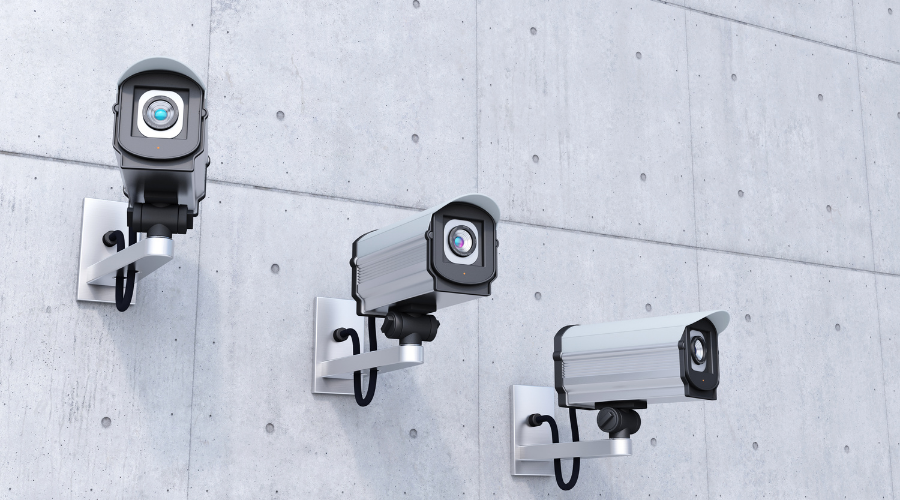Security Camera Refresh: 7 Key Factors for Upgrading Your Video Surveillance System

Why Should You Refresh Video Camera Equipment?
Organizations invest in video surveillance (CCTV) networks to enhance security and operational efficiency. However, as technology advances and organizational needs evolve, it’s important to assess whether your current video surveillance system can actually meet your current needs and goals for the future. For instance, are you intending to invest in advanced technologies like video analytics software? If so, you need to evaluate the limitations of your existing cameras to ensure the can deliver the visual requirements needed for video analytics to operate effectively These solutions identify, classify, and index objects in video footage, making data searchable and actionable. If factors like video quality are not compatible, you should consider a camera refresh.
Here are some questions you can ask to help you explore the need for potential camera upgrades or replacements:
- Are my cameras obsolete? Aging infrastructure may lack support and pose security vulnerabilities.
- Does my organization need enhanced capabilities? Newer camera technologies offer improved functionalities, such as higher resolution and advanced analytics.
- Do my existing cameras help me meet regulatory compliance? Adhering to updated local, state, or federal regulations may necessitate equipment upgrades.
- Does my organization have specific requirements? Departments like security and IT may require higher-quality footage and better system integration.
The investment in upgrading your video surveillance system also varies based on factors like system size, chosen hardware, and infrastructure requirements. While there are many cost-effective options on the market, it is important to evaluate the longevity of the solution. Is it truly budget-friendly or will it cost you even more in the long run when your organization inevitably grows or changes? A comprehensive upgrade may seem daunting now, but they often provide greater value and pave the way for easier expansions and integrations in the future.
Where to Start with Your Security Camera Refresh
Here are seven key factors to consider when planning your comprehensive security camera refresh:
1.Camera Resolution
High-resolution cameras are essential for capturing the detailed footage necessary for identifying critical elements such as faces and license plates. Enhanced video quality supports sophisticated video analytics which in turn, better facilitates accurate object identification and trend analysis. Investing in cameras with superior resolution ensures your system meets current and future surveillance needs.
2. Storage Needs
Upgrading to high-resolution cameras increases data storage requirements. Factors influencing storage include:
-
- Frame Rate: Higher frame rates produce smoother video but consume more storage.
- Bit Rate: Determines video quality and storage usage.
- Retention Period: The duration for which footage is stored impacts total storage needs.
Assess your storage infrastructure to ensure it can handle increased demands. Consider the pros and cons of on-premises and cloud-based solutions.
3. Eliminating Blind Spots
Strategic camera placement is vital to achieve comprehensive coverage and eliminate blind spots. Evaluate your premises to identify areas lacking surveillance and position cameras to monitor entrances and exits, high-traffic zones, perimeters, and parking areas. Modern cameras often feature wide dynamic range (WDR) technology that can enhance visibility in varied lighting conditions to ensure critical areas are well-monitored.
4. Camera Positioning
To determine optimal camera positioning, you must assess both environmental factors and intended function. For instance, to successfully implement facial recognition for access control at a building entrance will require cameras to be positioned at appropriate angles and heights. Other considerations include:
-
- Environmental Conditions: Outdoor cameras should withstand weather variations.
- Lighting: Adequate illumination ensures clear footage.
- Integration Potential: Position cameras to maximize compatibility with analytics software.
5. Durability
Cameras operating in challenging environments, such as industrial sites or outdoor areas, must be robust. Durable equipment reduces maintenance costs and ensures continuous operation so select cameras designed to endure:
-
- Extreme temperatures
- Exposure to sunlight
- Potential physical damage
6. Cabling and Infrastructure
When you upgrade cameras, it is important to evaluate existing cabling and network infrastructure in parallel. While not a camera specific upgrade, considering infrastructure upgrades will ensure that you achieve optimal camera performance and system reliability. A few things to get your evaluation started include:
-
- Cable Quality: Older cables may not support high-resolution data transmission.
- Power Supply: Ensure adequate power sources, especially for Power over Ethernet (PoE) devices.
- Network Bandwidth: High-resolution cameras require sufficient network capacity.
7. Future-Proofing Your System
Investing in scalable and adaptable technology safeguards your system against obsolescence. You can avoid this by choosing cameras compatible with emerging technologies, ensuring integration capabilities with other security and operational systems, and planning for scalability to accommodate organizational growth. This forward-thinking approach will maximize your return on investment and empower you to maintain system relevance for a longer period of time.
Investing in a Strategy for Long-Term Success
Refreshing your video surveillance system is a strategic decision that enhances security and operational efficiency. By considering these factors, organizations can implement a robust, future-ready security camera refresh that aligns with evolving needs and technological advancements.
Acquiring increased video analytic capabilities is a major driver for many organizations considering camera upgrades. Learn about the ROI of video analytics in this exclusive report from Omdia so you can build a string case for this critical investment. Get the report.
This post was originally published in May 2021, and has been refreshed and updated for accuracy.
Signup to receive a monthly blog digest.